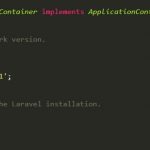For as long as most of us can remember, we have been hearing about the promise of quantum computers. These revolutionary machines have the potential to offer dramatic speed and efficiency gains over traditional computing systems, with capabilities that would allow them to handle immensely complex calculations at a much faster rate than ever before.
But despite all the excitement around this technology, progress toward a commercially available quantum computer has been slow going. Major breakthroughs in materials science, computing theory, and other fields have been necessary in order for such a device to become reality.
Nevertheless, there are signs that we may finally be on the cusp of a major leap forward in this field. Experts believe that as our understanding of quantum physics continues to advance and new technologies come online, we may soon see the birth of truly game-changing quantum computers. Whether they will actually live up to their hype remains to be seen, but one thing is for sure – for almost forty years now, we’ve been hearing about these impressive advancements in quantum computing, and there is no indication that this phenomenon is slowing down anytime soon.

Table of Contents
What is Quantum Computing?
Quantum computing is a type of computing where information is processed using quantum bits instead of classical bits. This makes quantum computers much faster and more powerful than traditional computers. Quantum computers are able to solve problems that classical computers cannot, such as factoring large numbers or searching unsorted databases.
Traditional computers use bits that are either 1 or 0. Quantum computers use quantum bits, or qubits. Qubits can be both 1 and 0 at the same time, which is called superposition. This allows quantum computers to process multiple pieces of information at the same time.
The benefits of quantum computing include:
- Increased processing speed and efficiency
- Ability to solve complex problems that are intractable for classical computers
- Ability to model complex systems with unprecedented accuracy and precision
There is much excitement surrounding the potential of quantum computing, as many believe it could be a major breakthrough in fields such as machine learning, data analytics, cryptography, and more. However, there are still many challenges that need to be overcome before we see mainstream adoption of this technology. Despite these challenges, many experts believe that quantum computing has the potential to revolutionize our world in the years to come.
5 Strongest Breakthroughs in Quantum Computing
As quantum computing continues to make waves in the tech industry, we take a look at 5 of the strongest quantum computing breakthroughs to date. From increasing processing power to developing new algorithms, these advances are paving the way for quantum supremacy.
First quantum computer described
In 1980, Paul Benioff introduced the idea of quantum computers to the world and demonstrated the math that makes them work. He showed how they could be used to solve problems that are difficult or impossible for classical computers. Basically, he transformed the concept of a Turing Machine into a quantum function using Schrodinger’s wavefunction.
This discovery has led to a new field of research called quantum computing. Quantum computers are able to perform calculations using quantum bits, or qubits. They can be in multiple states simultaneously, and this allows them to perform several calculations at once. This makes them much faster and more powerful than classical computers. In the years since Benioff’s discovery, quantum computers have become an important tool for solving complex problems in physics, chemistry, and other fields.
Shor’s algorithm
Peter Shor’s discovery in 1994 of an algorithm that could be processed by a quantum computer to break RSA encryption was a pivotal moment in the history of quantum computing.
The RSA encryption algorithm is the most widely used public-key cryptography algorithm in the world. But it is based on the factoring of large numbers – something that a quantum computer could do very quickly. If Shor’s algorithm could be run on a large-scale quantum computer, it would be able to factorize the large numbers used in RSA encryption and thereby break the code. This would have devastating consequences for e-commerce and banking, which rely on RSA encryption to make sure that data is secure. Even though Shor’s algorithm was only a theoretical finding, it showed that quantum computers could have a real-world impact – and this made people sit up and take notice.
His findings generated more interest in quantum computers than anything had before, and as soon as he demonstrated his algorithm, the motivation to research and construct quantum computers became much more intense. The funding for quantum computing also increased significantly, and today there are many different research institutions and companies working on building a working quantum computer.
While the road to a fully functioning quantum computer is still long, Shor’s algorithm has given scientists and engineers a clear goal to work towards, and the progress that has been made in the last 25 years is remarkable. There is no doubt that Peter Shor’s algorithm will continue to be a driving force in the development of quantum computing for years to come.
D-Wave’s progress
Despite the skepticism of many scientists, D-Wave Systems has made some pretty bold claims about their revolutionary quantum annealing computer. In 2011, the company announced that it had built a fully functional 128-qubit system and was ready to take the world of quantum computing by storm. While such a milestone generated considerable excitement among researchers in the field, many skeptics doubted that D-Wave really had achieved what they said they had. They claimed that any results produced by D-Wave’s quantum computing system were likely due to ordinary classical algorithms rather than true quantum processing power.
However, as time has gone on and D-Wave Systems has continued to make strides in its research and development, critics have begun to quiet down. More and more evidence seems to support claims that D-Wave’s machines are capable of true quantum behavior and may eventually come to rival conventional computers in their processing power and speed. Whether this will lead to a true revolution in computing remains to be seen, but for now, it seems clear that D-Wave is leading the way when it comes to innovative quantum technology.
Quantum computer built inside a diamond
Scientists have long been working to develop practical, solid-state quantum computers, and now a team of researchers has achieved an important breakthrough in this area. By embedding qubits into a diamond structure containing intentionally built-in flaws, the scientists have constructed a working quantum computer that is both scalable and resistant to noise or “decoherence.”
This makes it much more practical than other previous designs for solid-state quantum computers, which often suffer from temperature sensitivity or environmental interference. Given its advantages, it is likely that this new type of quantum computer will pave the way for future innovations in the field. After all, having a machine capable of outperforming even the most powerful classical computers would be a huge leap forward for science, technology, and society as a whole.
Google Quantum AI

In September 2019, Google Quantum AI announced that they had achieved a major milestone: quantum supremacy. This breakthrough is a significant milestone in quantum computing and paves the way for new applications that could revolutionize the field.
For example, quantum computers could be used to simulate complex molecules and materials, which could lead to new pharmaceuticals and more efficient batteries. They could also be used to solve optimization problems, such as routing traffic or designing aircraft. In addition, quantum computers could help us to unlock the mysteries of the universe by modeling subatomic particles.
Google Quantum AI is working to improve quantum computing and create new tools that will help researchers do more than ever before. This is an exciting time for quantum computing, and Google is at the forefront of this cutting-edge technology.




